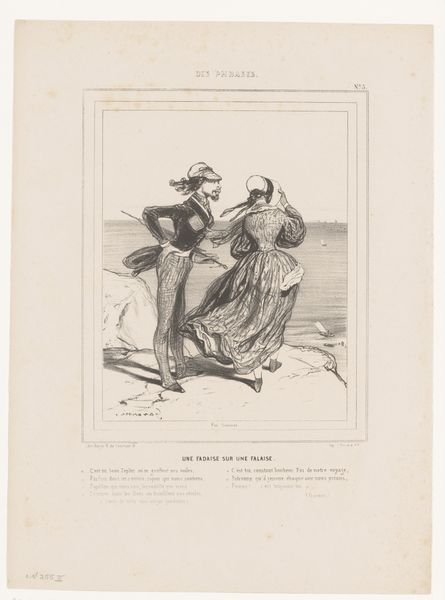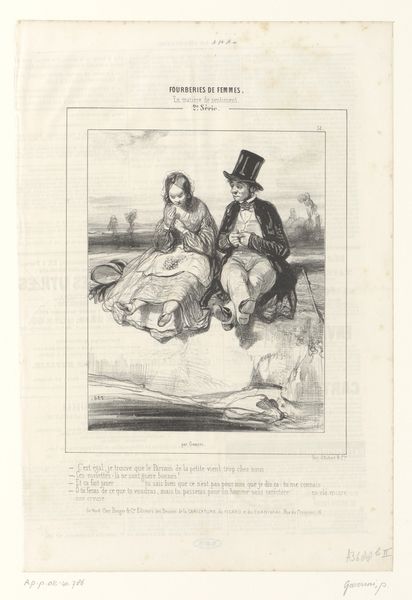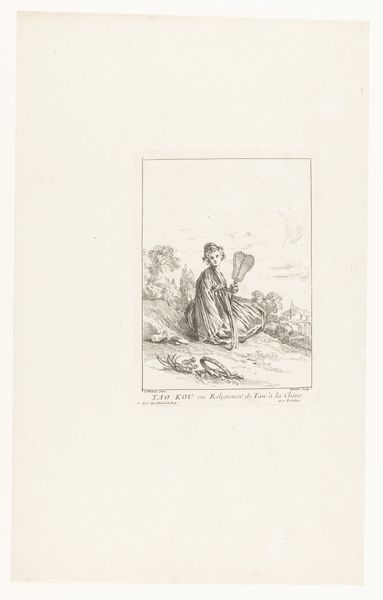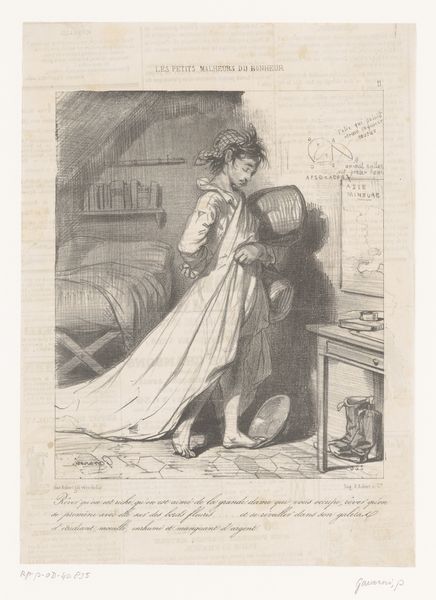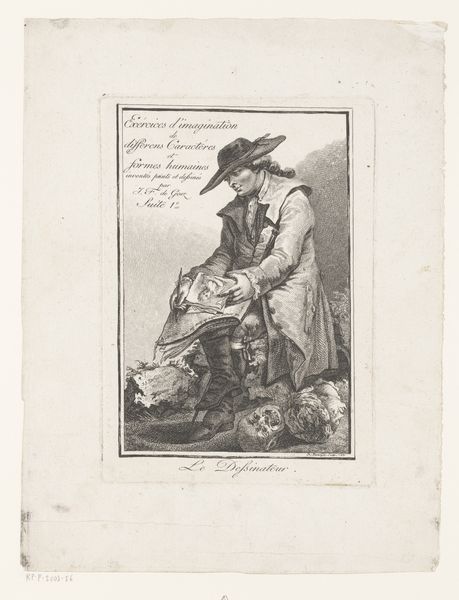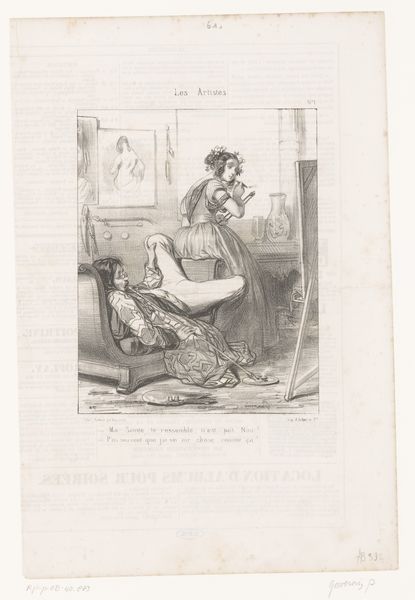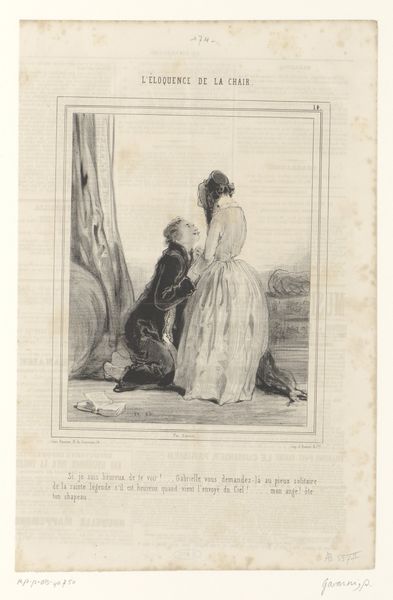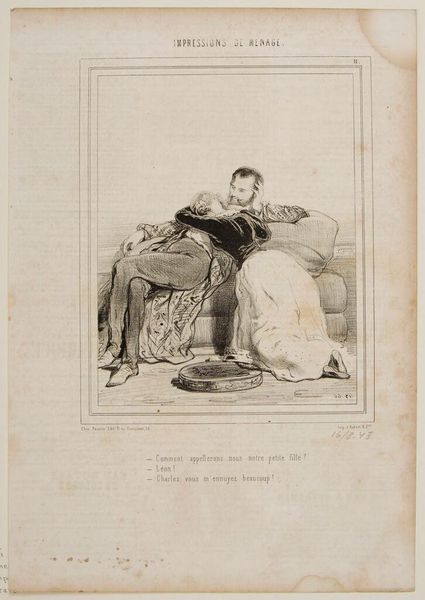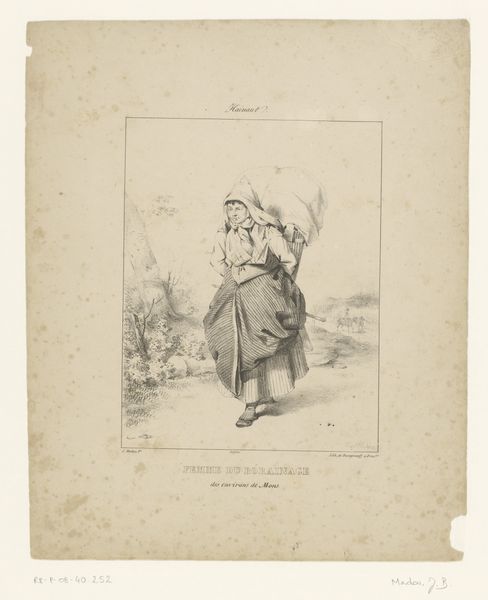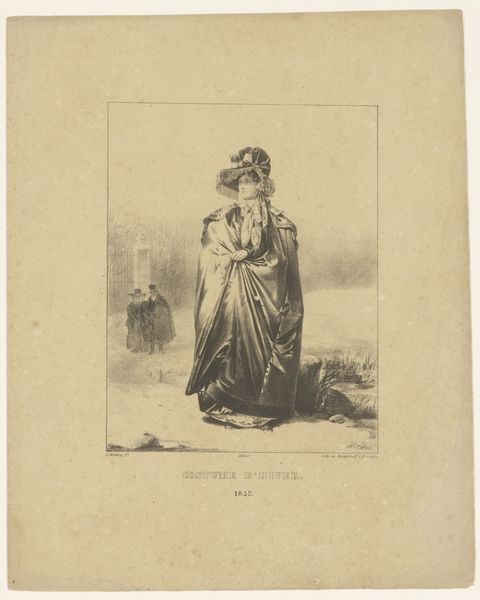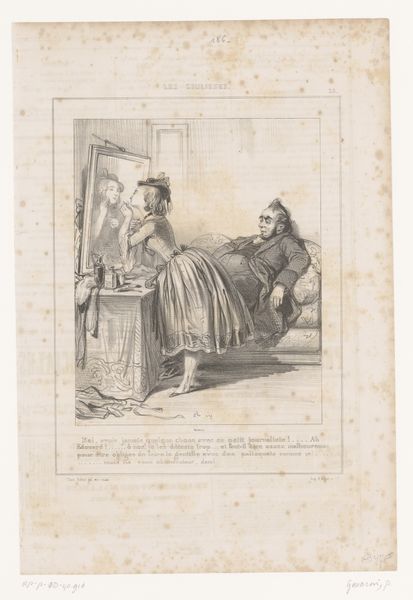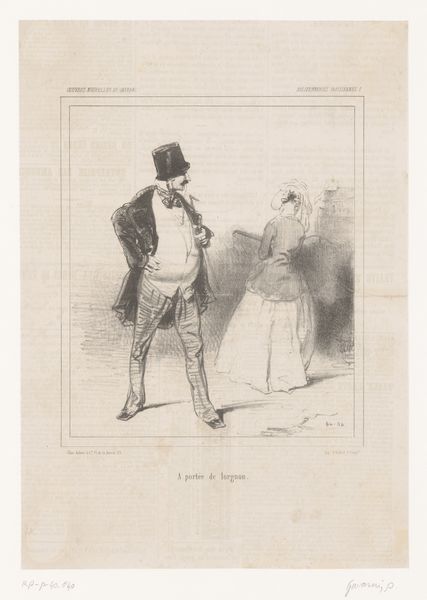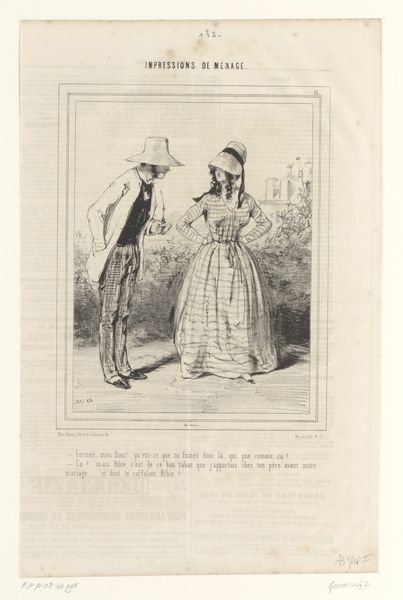
Man en vrouw bekijken het uitzicht vanaf de heuvel van Montmartre 1838
drawing, lithograph, print, pen
portrait
drawing
lithograph
caricature
pencil sketch
old engraving style
archive photography
romanticism
pen
genre-painting
Dimensions: height 362 mm, width 243 mm
Copyright: Rijks Museum: Open Domain
Curator: This print by Paul Gavarni, titled "Man en vrouw bekijken het uitzicht vanaf de heuvel van Montmartre", or "Man and woman looking at the view from the Montmartre hill" in English, made in 1838, gives off a feeling of observation. It is done with a pen and lithograph and is part of the Rijksmuseum collection. Editor: The first thing that strikes me is the almost performative quality. It’s not just a scene, but a commentary, maybe a satire, on how people present themselves within a romantic setting. The way they're positioned—almost staged—makes you question their genuine connection to the view. Curator: Gavarni, working in the tradition of Romanticism and specifically known for caricature, presents a window into Parisian society at the time. The "Patois de Paris" at the top of the page is a social critique. The man’s lounging posture, the woman with her spyglass... These aren't merely figures enjoying a landscape, they are social symbols. The democratization of leisure spaces in places like Montmartre had social implications that were being played out in public. Editor: Yes, there is a definite reading to be found through the implements in the image. Her spyglass certainly catches my attention; beyond simple seeing, she must seek. She wants more. Is this an observation of the growth of technology and society's dependence on new lenses to understand the world? Curator: Undoubtedly. It is this lens metaphor that has such appeal to a society becoming more stratified through technologies, systems of capital and cultural identities. This piece reflects back upon this evolution through dress, technology and attitude. We must ask ourselves: is she really absorbing this moment of Romantic landscape or simply using this public space as a performance? Editor: What fascinates me most is how the landscape itself seems almost secondary. It's a backdrop for this very human, very complex interaction, loaded with visual codes of class and aspiration. It prompts one to look closer at such images for these very historical threads that exist, especially now. Curator: Absolutely. And by viewing through this lens of performativity and satire, we find that such threads in historical material help clarify the evolving dynamics of identity and societal critique across time.
Comments
No comments
Be the first to comment and join the conversation on the ultimate creative platform.
